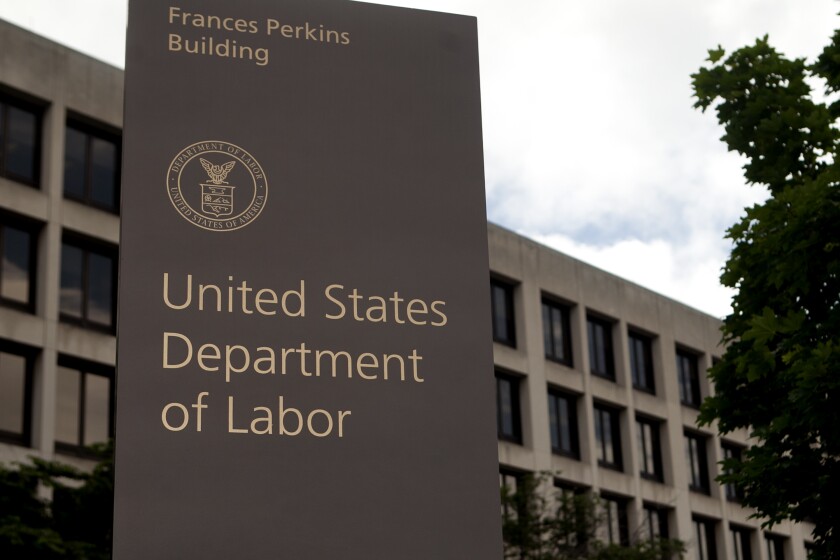Wells Fargo’s asset cap is still limiting the bank’s ability to maneuver during the current economic crisis, even after the Federal Reserve relaxed the restrictions in April to make more room for emergency business lending, CEO Charlie Scharf said Friday.
As clients rushed to draw down their credit lines and pour deposits back into Wells Fargo when the economy shuttered, the San Francisco bank started to approach its $1.95 trillion asset cap, Scharf said at the Bernstein Strategic Decisions Virtual Conference. Regulators clamped the limit on the bank two years ago after a phony-accounts scheme and other customer abuses were uncovered.
Scharf said the bank had to take “substantial actions” like moving some of those deposits outside of the company to stay under the cap.
“It hasn’t been easy. We were operating with a cushion, but I would say not anticipating the kinds of draws and inflows of deposits" that occurred, he said. "It happened very, very quickly.”

The Fed said in April that it would not count the bank’s lending through the Small Business Administration’s emergency Paycheck Protection Program and the central bank’s Main Street Lending Program against the cap while the two credit facilities were still operating.
But the move may have been more limited than what Wells was hoping for. Scharf said while it’s ultimately up to the Fed to lift the cap entirely, the bank is having to make “tough choices” in a downturn.
“The asset cap is unfortunate especially in an environment like this, but it’s a fact of life and we’re more focused than ever on doing the work necessary to get it behind us,” Scharf said.
The U.S. Small Business Administration and the Treasury Department relaunched the Paycheck Protection Program on Monday to new borrowers, prioritizing loans from community lenders.
Growth in small business jobs and wages declined last month as a result of the novel coronavirus pandemic, according to payroll giant Paychex.
The economic fallout from the coronavirus pandemic is continuing.
Scharf said bank officials are still working to meet the conditions set by regulators. But that work was delayed by the pandemic, he said.
“Has it gotten in the way of the work that has to get done? I think the honest answer is in those first couple of weeks when we were all trying to figure out how to work from home there was probably a little disruption in everything,” Scharf said. “But we and everyone else settled into this way of working, and the work is continuing.”
Like Bank of America indicated earlier this week, Wells Fargo has seen a spike in expenses — roughly $500 million of costs in the second quarter that Wells officials hadn’t expected and are directly tied to COVID-19, Scharf said.
But when the economy starts to recover, there will be a chance for the bank to expand if it can get costs under control and if regulators permit growth again.
“The opportunities are as big as I’ve ever seen,” Scharf said. “The opportunity to capture more share of what we do for [customers] is huge.”
Separately, Wells said Friday that it has hired two new corporate risk leaders and made organizational changes to strengthen oversight of companywide risk-taking activities.
Kevin Reen, who most recently had been JPMorgan Chase's chief risk officer for its card services business, will join Wells in August as chief risk officer for consumer lending. Searches will be conducted to fill similar spots in commercial banking, wealth management and two other units, the company said in a news release.
And Bill Juliano, who was chief U.S. operational risk officer at Santander Bank, will start in July as lead of Wells Fargo's operational risk management team.
Reen and Juliano will report to Mandy Norton, the risk chief of the entire company.




